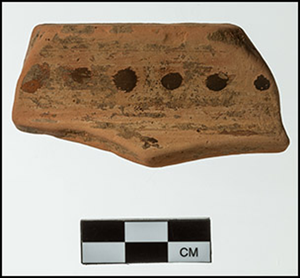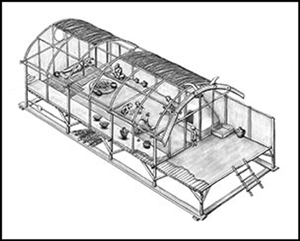Refine listing
Actions for selected content:
1418719 results in Open Access
The Enmynveem mammoth and vegetation changes in arctic Chukotka during the Late Quaternary
-
- Journal:
- Quaternary Research / Volume 119 / May 2024
- Published online by Cambridge University Press:
- 26 February 2024, pp. 118-128
-
- Article
-
- You have access
- Open access
- HTML
- Export citation
Anger and Political Conflict Dynamics
-
- Journal:
- American Political Science Review / Volume 118 / Issue 3 / August 2024
- Published online by Cambridge University Press:
- 26 February 2024, pp. 1158-1173
- Print publication:
- August 2024
-
- Article
-
- You have access
- Open access
- HTML
- Export citation
Mediterranean Early Iron Age chronology: assessing radiocarbon dates from a stratified Geometric period deposit at Zagora (Andros), Greece
- Part of
-
- Article
-
- You have access
- Open access
- HTML
- Export citation
TRI volume 49 issue 1 Cover and Back matter
-
- Journal:
- Theatre Research International / Volume 49 / Issue 1 / March 2024
- Published online by Cambridge University Press:
- 26 February 2024, pp. b1-b2
- Print publication:
- March 2024
-
- Article
-
- You have access
- Export citation
Challenges and Opportunities Surrounding Catholic Education
-
- Journal:
- New Blackfriars / Volume 105 / Issue 3 / May 2024
- Published online by Cambridge University Press:
- 26 February 2024, pp. 217-229
- Print publication:
- May 2024
-
- Article
-
- You have access
- Open access
- HTML
- Export citation
“You Are Not Alone”: Angela Davis and the Soviet Dreams of Freedom
- Part of
-
- Journal:
- International Review of Social History / Volume 69 / Issue S32 / April 2024
- Published online by Cambridge University Press:
- 26 February 2024, pp. 63-90
-
- Article
-
- You have access
- HTML
- Export citation
“Side by Side with Fighting Nations”: Making the New Culture of Pro-African Solidarity in the Campaigns of the Czechoslovak Committee for Solidarity with African and Asian Peoples
- Part of
-
- Journal:
- International Review of Social History / Volume 69 / Issue S32 / April 2024
- Published online by Cambridge University Press:
- 26 February 2024, pp. 177-196
-
- Article
-
- You have access
- Open access
- HTML
- Export citation
Cost-Effectiveness of Late Endovascular Thrombectomy vs. Best Medical Management in a Clinical Trial Setting and Real-World Setting
-
- Journal:
- Canadian Journal of Neurological Sciences / Volume 51 / Issue 6 / November 2024
- Published online by Cambridge University Press:
- 26 February 2024, pp. 803-810
-
- Article
-
- You have access
- Open access
- HTML
- Export citation
The Interplay between Hereditary Traditional Leaders, Democratically Elected Leaders and Succession: A Case Study from Makapanstad, North West Province, South Africa
-
- Journal:
- Journal of African Law / Volume 68 / Issue 2 / June 2024
- Published online by Cambridge University Press:
- 26 February 2024, pp. 203-214
- Print publication:
- June 2024
-
- Article
-
- You have access
- Open access
- HTML
- Export citation
The ‘Courant Hilton’: building the mathematical sciences at New York University
-
- Journal:
- The British Journal for the History of Science / Volume 57 / Issue 3 / September 2024
- Published online by Cambridge University Press:
- 26 February 2024, pp. 425-446
- Print publication:
- September 2024
-
- Article
-
- You have access
- Open access
- HTML
- Export citation
Trypillia mega-sites: a social levelling concept?
-
- Article
-
- You have access
- Open access
- HTML
- Export citation
The merger of co-rotating vortices in dusty flows
-
- Journal:
- Journal of Fluid Mechanics / Volume 981 / 25 February 2024
- Published online by Cambridge University Press:
- 26 February 2024, A27
-
- Article
-
- You have access
- Open access
- HTML
- Export citation
Home Beyond the House: Transformation of Life, Place, and Tradition in Rural China Wei Zhao. London and New York: Routledge, 2023. 350 pp. £120.00 (hbk). ISBN 9781032280158
-
- Journal:
- The China Quarterly / Volume 257 / March 2024
- Published online by Cambridge University Press:
- 26 February 2024, pp. 282-284
- Print publication:
- March 2024
-
- Article
- Export citation
Does sweetness exposure drive ‘sweet tooth’?
-
- Journal:
- British Journal of Nutrition / Volume 131 / Issue 11 / 14 June 2024
- Published online by Cambridge University Press:
- 26 February 2024, pp. 1934-1944
- Print publication:
- 14 June 2024
-
- Article
-
- You have access
- Open access
- HTML
- Export citation
“Without Solidarity, No People”: International Solidarity in the East German People's Solidarity
- Part of
-
- Journal:
- International Review of Social History / Volume 69 / Issue S32 / April 2024
- Published online by Cambridge University Press:
- 26 February 2024, pp. 117-137
-
- Article
-
- You have access
- HTML
- Export citation
Scenography of the Unimaginable: Exploring Trauma of Others in 872 days. Voices of the besieged city
-
- Journal:
- Theatre Research International / Volume 49 / Issue 1 / March 2024
- Published online by Cambridge University Press:
- 26 February 2024, pp. 70-88
- Print publication:
- March 2024
-
- Article
-
- You have access
- Open access
- HTML
- Export citation
Average Jaccard index of random graphs
- Part of
-
- Journal:
- Journal of Applied Probability / Volume 61 / Issue 4 / December 2024
- Published online by Cambridge University Press:
- 26 February 2024, pp. 1139-1152
- Print publication:
- December 2024
-
- Article
- Export citation
Analysis of
 ${\textit{d}}$-ary tree algorithms with successive interference cancellation
${\textit{d}}$-ary tree algorithms with successive interference cancellation
- Part of
-
- Journal:
- Journal of Applied Probability / Volume 61 / Issue 3 / September 2024
- Published online by Cambridge University Press:
- 26 February 2024, pp. 1075-1105
- Print publication:
- September 2024
-
- Article
-
- You have access
- Open access
- HTML
- Export citation
An Ecological History of Modern China Stevan Harrell. Seattle, WA: University of Washington Press, 2023. 582 pp. $29.99; £35.00 (pbk). ISBN 9780295751719
-
- Journal:
- The China Quarterly / Volume 258 / June 2024
- Published online by Cambridge University Press:
- 26 February 2024, pp. 580-581
- Print publication:
- June 2024
-
- Article
- Export citation
Dossier—Negotiating Urban Spaces: Access, Care and Confinement in Contemporary Gendered Performance
-
- Journal:
- Theatre Research International / Volume 49 / Issue 1 / March 2024
- Published online by Cambridge University Press:
- 26 February 2024, pp. 89-94
- Print publication:
- March 2024
-
- Article
-
- You have access
- Open access
- HTML
- Export citation







